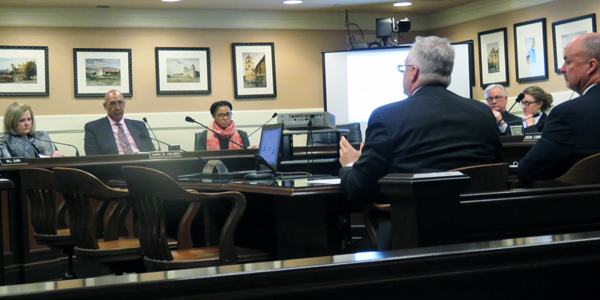By Jason Fordney
SACRAMENTO, Calif. — CAISO officials on Wednesday urged California lawmakers to pass legislation that would convert the grid operator into an RTO, saying a regionalized grid would benefit the state.
CAISO executives told Assembly Utilities and Energy Committee Chairman Chris Holden (D) that they support his regionalization bill (AB 813), which represents a third attempt to regionalize the ISO. The bill is getting opposition from some quarters.
“A regional grid will be good for California,” CAISO Director of Regional Integration Phil Pettingill told the committee. He said a “major evolution” is occurring in the West, with utilities looking for ways to procure more renewables, in alignment with California’s goals.
Mark Rothleder, CAISO vice president of market quality and renewable integration, pointed out that the West is an interconnected system with 38 balancing authority areas. He said the state’s goal of generating 50% of its electricity with renewables by 2030 is achievable but faces challenges dealing with the “duck curve” load shape of California energy demand.
The curve shows that the state’s load dips in the middle of the day as solar resources increase output, then ramps up steeply in the evening as the sun sets. The steep ramps require CAISO to lean on fast-ramping generation to meet evening demand, which regionalization supporters say could be tapped more easily from inland renewables under a regional grid. The arrangement would also allow California to export more of its surplus solar during the day.
State Assemblyman Bill Quirk (D) acknowledged there are reservations across the region about “getting in bed with the 800-pound gorilla we call California.” But despite the misgivings and the complications, “I am convinced we can come up with a fair way of doing this.”
Quirk recently proposed separate legislation on the committee’s April 4 agenda that would require California utilities to procure power from gas-fired plants that cannot make sufficient profit in CAISO markets.
Jan Smutny-Jones, CEO of the Independent Energy Producers Association, said regionalization would help lower California’s costs for reaching its carbon reduction goals.
“The rest of the West isn’t going to decarbonize because California tells them to, but they will buy cheap electrons,” he said. He said California will continue to have control over its resource decisions, CO2 policy, generation siting, and retail rates and programs.
“All of those things you do today, you can continue to do in the future, and that is important to recognize,” he said.
But Matt Freedman, attorney for The Utility Reform Network, warned that regionalization could force California to conform to policies of the Trump administration, which he said is hostile to the state and its clean energy goals. He also suggested that FERC would exert more control over the new RTO, and that “this is not your father’s FERC.”
Holden is taking a cautious tack on the regionalization effort, saying the hearing was “an opportunity to look at the contours of AB 813.” He added that he is trying to make the process as transparent as possible after the regionalization skeptics raised many issues during last year’s effort, including concerns by labor groups about the exporting of energy-related jobs.
“We recognized that an issue of this magnitude required a little more conversation on a broader scale,” Holden said.
As of Thursday, AB 813 was not listed on the agenda for the committee’s April 4 hearing.






